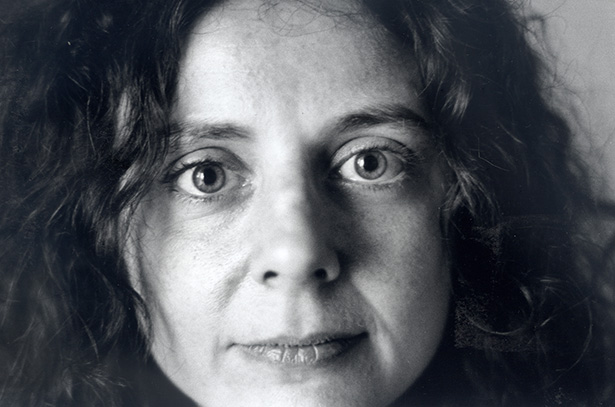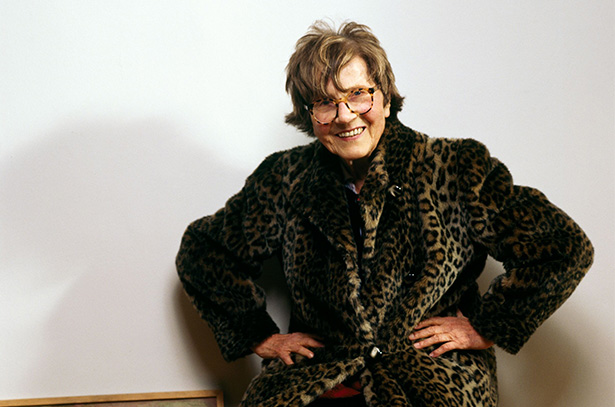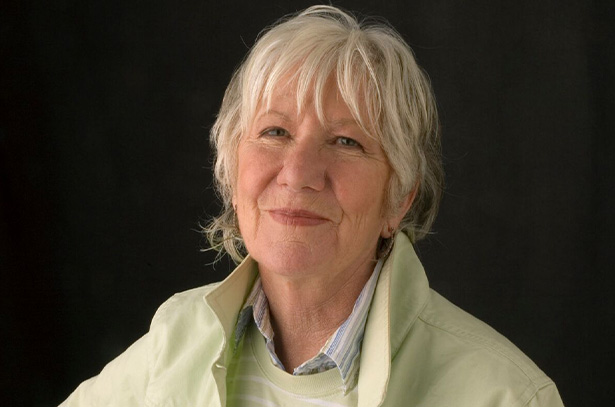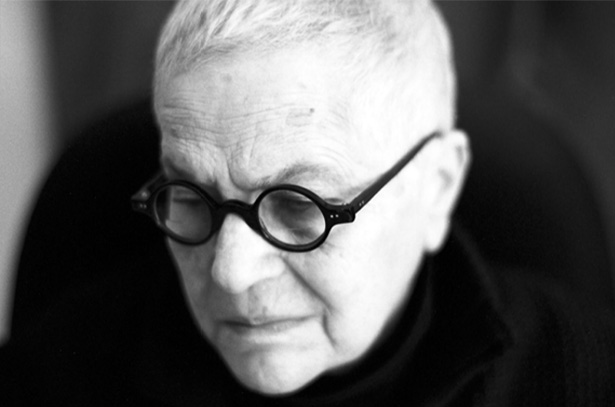
Material Actions
7 July - 8 September 2019
St. Moritz
Hauser & Wirth is proud to inaugurate the gallery’s first summer season in St. Moritz with an exhibition of modern and contemporary works by important female artists from the gallery’s roster. Entitled ‘Material Actions’, the exhibition takes its title from a series by the artist Anna Maria Maiolino and refers to the gesture innate in the creative process. The presentation aims to explore the complex discourse of painting, questioning its inherently masculine tradition, and the different ways in which artists in the exhibition have engaged with the genre. All works show traces of the hand whether the artist is expressing geometric form, line or their own subjectivity. The perspectives featured traverse continents and decades including work by the key figures: Rita Ackermann, Ida Applebroog, Mary Heilmann, Jenny Holzer, Luchita Hurtado, Maria Lassnig, Lee Lozano and Anna Maria Maiolino.
Of the many dialogues which are evoked by these artists, the relationship between abstract form and colour runs as a thread throughout the first part of the presentation. On the first floor of the gallery, works by Mary Heilmann and Anna Maria Maiolino delve into the possibilities and myriad permutations of abstraction. In the case of Mary Heilmann, the poetry of the works lies in the tension between the rigours of geometry and the contingencies of the human and the organic. The simplicity of these works, such as ‘The Red Screen’ (1995), is played down by a deceptive form of nonchalance and perceptible brushstrokes. Heilmann’s casual painting technique conceals a frequently complex structure that only gradually reveals itself to the viewer.Anna Maria Maiolino, one of the most significant artists working in Brazil today, uses abstraction and fragmentation to explore notions of subjectivity and the self. Her application of paint often bears the imprint of unconscious gestures, daily rituals and sensory expressions of being. In her series Ações Matéricas (Material Actions), Maiolino’s mark-making is based on the repetition of basic actions that are recorded in the material. The application of paint or ink to surface retains an intimacy between artist and object bringing to mind the contemplative space of the studio. In this respect, the exhibition, which features works dating over the last half century, encourages an interrogation of the creative act. The relationship between hand, gesture and line is pertinent in the works of Lassnig, and Hurtado, who use the canvas as a tool to forge their own subjective experiences, shifting between figuration and abstraction. Austrian artist Maria Lassnig devoted much of her career to recording her physiological states through a direct and unflinching style. Works featured in the exhibition, such as the important early figurative painting ‘Die Diktatoren (The Dictators)’ (1964), combines abstracted, anthropomorphc figures with vivid hues to capture physical sensations the artist felt from within. Luchita Hurtado merges abstraction and representation in her painting practice with mystical effect, exploring connections between the body and its larger context – nature, the environment, and the cosmos – in an effort to express universality and transcendence. The oil on paper works in the exhibition depict brightly coloured lines of yellows, greens, oranges and blues (drawing on the tropical fauna of Mexico and her native Venezuela) to create angular compositions that could be seen to morph from landscapes into figures. This artistic vocabulary which has been formed through a coalescence of abstraction, mysticism, corporeality and landscape, speaks to the multicultural and experiential contexts that have shaped the artist’s life and career. The expressive potential of the painted surface is further considered through the dialogue of Rita Ackermann, Ida Applebroog, Jenny Holzer and Lee Lozano, who are exhibited together on the ground floor of the gallery. Ackermann challenges means of representation through ghost-like compositions which are achieved through sweeping, determined gestures of drawing, painting and erasing, wherein figures rise to the surface only to dissolve again. Applebroog’s work explores themes of violence and power, gender politics, women’s sexuality and domestic space using images stylistically reminiscent of comics, at once beguiling and disturbing. The expressive strokes of Lee Lozano’s paintings are imbued with energy, daring physicality and tirelessness as the artist investigates the body and issues of gender. These artists use the genre of painting as a powerful tool for expression. While painting is frequently a deeply personal endeavour, the medium’s potential as a political statement is in evidence through the work of Jenny Holzer. Works by Holzer in the exhibition include a recent series of paintings featuring decommissioned military documents bearing testimony to acts of brutality. Here the artist creates a powerful tension between the realms of feeling and knowledge. Her approach to these works encompass both individual and collective experiences of power, violence, and vulnerability made tangible by veils of watercolour paint which obscure, and effectively censor, sections of the text.
Installation views


Related Content
About the Artists

Lee Lozano
Lee Lozano’s paintings are admired for their energy, daring physicality and tirelessness in investigating the body and issues of gender. Although lauded by Lucy Lippard in 1995 as the foremost female conceptual artist of her time, Lozano had disengaged herself from the New York art world completely by the early 1970s. She left behind a body of work of striking formal breadth and complexity. Lozano fought to consolidate her artistic self in a realm void of systems, rules, and group consciousness. She pursued a wholly independent solo studio practice, which culminated in her rejection of the New York art world and a boycott of women. She first refused to attend public art world functions and withdrew from exhibitions, finally relocating to Dallas, Texas. ‘By refusing to speak to women,’ says Helen Molesworth, Chief Curator of LA MOCA, ‘she exposed the systematic and ruthless division of the world into categories of men and women. By refusing to speak to women as an artwork, she also refused the demand of capitalism for the constant production of private property… The strategy of rejection is a powerful one.’

Maria Lassnig
Born in Carinthia in Southern Austria in 1919, Maria Lassnig’s (1919 – 2014) work is based on the observation of the physical presence of the body and what she termed ‘body awareness’, or ‘Körpergefühl’ in German. She studied at the Academy of Fine Arts in Vienna in the midst of the Second World War. Then, in post-war Europe, she quickly moved away from the state-approved academic realism in which she was trained, looking to Austria’s own avant-garde past, such as the coloration of Oskar Kokoschka and Egon Schiele’s expressionist treatment of figuration.
Her early years were marked by experiences with various ‘isms’, including artistic currents in surrealism and automatism from the late 1940s, followed by ‘art informel’ and post-cubism in the 1950s. After moving to Paris in 1960, an innovative figuration, expressive and painterly, was beginning to emerge. In the next few years, she developed narrative paintings with one or more figures, at times borrowing from technoid forms of science fiction set in absurdly caricatured scenes. Animal-like, monstrous self-portraits emerged alongside this group of works.
In 1968, Lassnig moved to New York where her artistic work once again switched direction—she turned to external realism and painted portraits, nudes and still lifes, at times combining these with her ‘body awareness’ self-portraits. Many of her paintings, drawings and watercolors were devoted to recording her physiological states through a direct and unflinching style. Utilizing contrasting colors such as greens, pinks and blues, as well as strong body shapes to give her paintings a powerful, even drastic impact, Lassnig looked to herself, a female artist in a predominantly male world, as her primary subject.
Of her artistic process, Lassnig has said: ‘I step in front of the canvas naked, as it were. I have no set purpose, plan, model or photography. I let things happen. But I do have a starting-point, which has come from my realization that the only true reality are my feelings, played out within the confines of my body. They are physiological sensations: a feeling of pressure when I sit or lie down, feelings of tension and senses of spatial extent. These things are quite hard to depict.’ Her famed portraits and self-portraits are often treated with a playful irony, even in her depictions of the aging body and psychological turmoil.
In 1980, Lassnig was awarded a professorship—with a focus on painting and animation film—at the University of Applied Arts in Vienna. As a result, her self-portraits repeatedly explored issues of overload and enforced estrangement. She then began dealing more extensively with mythological contents, with nature and ‘rural life,’ and continued her exploration of figure-ground tensions. From the late 1990s, Lassnig turned to the great existential themes with her so-called Drastic Pictures, such as the relationship between the sexes and generations, unchosen lifestyles, as well as oppression, destruction, impermanence, and death.
Portrait: Maria Lassnig in her studio, Vienna, 2007 © Monopol/Elfie Semotan 2007

Anna Maria Maiolino
Anna Maria Maiolino is one of the most significant artists working in Brazil today. Born 1942 in Italy, Maiolino’s practice expresses a concern with creative and destructive processes. Working across a wide range of disciplines and mediums—spanning drawing, printmaking, poetry, film, performance, installation and sculpture—Maiolino relentlessly explores notions of subjectivity and self.
Through fragmentation and abstraction, Maiolino’s surfaces are rich with metaphor, alluding to and questioning language, sexuality, desire and the unconscious. The artist’s deeply formative migration from post-war Southern Italy to a politically unstable South America, and her linguistic passage from Italian to Portuguese, engendered an enduring fascination with identity. Maiolino has perfected a dialogue between opposite yet complementary categories in a practice that dissolves dichotomies of inner and outer, self and other. Hers is an art in search of a new language for the liminal realm of daily human existence.
Shadowed by the turmoil and governance of military repression, Maiolino’s early experiments in the 1960s connected her to important movements in Brazilian art history such as New Figuration and New Objectivity. Maiolino took part in the radical reconfiguring of the art object—and thus the art institution and the artist—during this period. Along with Lygia Pape, Lygia Clark, and Hélio Oiticica, Maiolino participated in the 1967 exhibition, ‘New Brazilian Objectivity,’ which symbolized a cultural shift in previous constructivist traditions and established a new vision for the production of art in Brazil.
Since the early 1980s Maiolino has worked with malleable materials that, through her handling, come to bear the imprint of unconscious gestures, daily rituals and sensory expressions of being. Her mark-making is based on the repetition of basic actions that are recorded in the material; her forms the result of this laborious processing of raw material, like the basic bodily functions of eating and defecating. Hers is a work of liberation: abstraction is freed from the more repressed and puritanical precepts of Minimalism and brought back into the service of the active, desiring body.

Mary Heilmann
Influenced by 1960s counterculture, the free speech movement, and the surf ethos of her native California, Mary Heilmann ranks amongst the most influential abstract painters of her generation. Considered one of the preeminent contemporary Abstract painters, Heilmann’s practice overlays the analytical geometries of Minimalism with the spontaneous ethos of the Beat Generation, and are always distinguishable by their often unorthodox—always joyful—approach to color and form.
Raised in San Francisco and Los Angeles, Heilmann completed a degree in literature, before she studied ceramics at Berkeley. Only after moving to New York in 1968 did she begin to paint. While most artists at that time were experimenting with the concept of dematerialization and demanding that painting should avoid any references to experience outside the material presence of the work itself, Heilmann opted for painting, rebelling against the accepted rules. ‘Rather than following the decrees of modern, non-representational formalism, I started to understand that the essential decisions taken during the creative process were more and more related to content. The Modern movement was over…’
Since then, Heilmann has created compositions that evoke a variety of associations. Her work may be non-representational and based on an elementary, geometrical vocabulary—circles, squares, grids and stripes—but there is always something slightly eccentric, casual about them. The simplicity of the forms is played down by a deceptive form of nonchalance: the contours are not clearly defined. In some paintings, amorphous forms appear to melt into each other like liquid wax. Splashes of color can be discerned, sharp edges bleed for no apparent reason, and the ductus of the brushstrokes is always perceptible. Heilmann’s casual painting technique conceals a frequently complex structure that only gradually reveals itself to the viewer.

Ida Applebroog
A self-proclaimed ‘generic artist’ and an ‘image scavenger,’ painter and feminist pioneer Ida Applebroog spent the past six decades conducting a sustained inquiry into the polemics of human relations. She explored themes of violence and power, gender politics, women’s sexuality and domestic space using images stylistically reminiscent of comics, at once beguiling and disturbing.
Applebroog first came to attention in New York in the mid-1970s, formulating her practice with a series of small self-published books, ‘Stagings’ of identical cartoon images presented in succession, evocative of flipbooks or film stills, which she mailed to other artists, writers and individuals. From this beginning, she developed an instantly recognizable style of simplified human forms with bold outlines. In an Applebroog exhibition, the visitor becomes an observer and a participant in a domestic drama where fragmented narrative scenes are neither beginnings nor ends to the story.
Current Exhibitions
1 / 12















